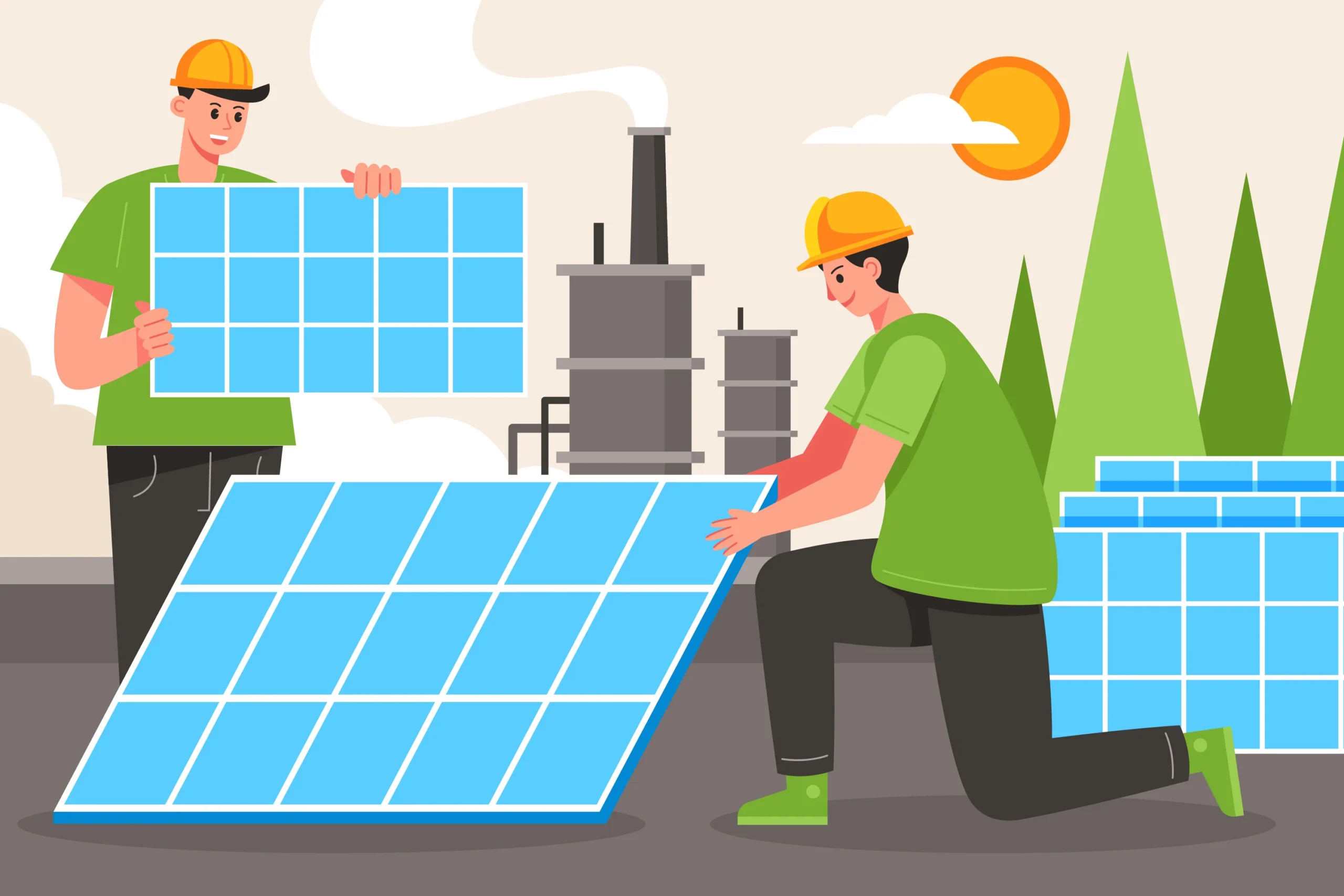Introduction
As the world moves towards sustainable and renewable energy sources, solar panels have become an increasingly popular choice for generating electricity. Solar panels harness energy from the sun, converting it into usable electrical power. But how exactly does this process work? In this article, we will explore how solar panels generate electricity, including the science behind the technology, the different types of solar panels, and the benefits of using solar energy.
The Science Behind Solar Panels
Solar panels work based on a principle called the photovoltaic effect. This process allows solar cells to convert sunlight directly into electricity.
What is the Photovoltaic Effect?
The photovoltaic effect is a process that occurs when photons (particles of light) hit a material and cause electrons to be released, creating an electric current. This phenomenon was first discovered by French physicist Alexandre-Edmond Becquerel in 1839. When exposed to sunlight, certain materials, like silicon, can generate a small electric voltage. Modern solar panels capitalize on this effect to produce electricity efficiently.
The Role of Silicon in Solar Panels
Silicon, a semiconductor material, is the primary component in most solar panels. It is used because of its ability to absorb light and convert it into electrical energy. Silicon atoms have electrons that can move freely when exposed to sunlight. When a photon hits the silicon, it transfers its energy to an electron, which then gets dislodged from its position and creates an electric current.
How Solar Panels Convert Sunlight into Electricity
Solar panels are made up of many solar cells connected together. Each solar cell is essentially a small device that converts sunlight into electricity. Here’s a step-by-step breakdown of how solar panels generate electricity:
1. Absorption of Sunlight
Solar panels are composed of multiple layers of silicon cells, a metal frame, a glass casing, and wiring. When sunlight strikes the panel, the photovoltaic cells absorb the light energy. The energy from the sunlight excites the electrons in the silicon cells, setting them in motion. This motion creates an electric current.
2. Generation of Direct Current (DC) Electricity
The movement of electrons across the solar cells generates direct current (DC) electricity. In this form, the electricity flows in one direction, from the negatively charged side of the solar cell to the positively charged side.
3. Conversion to Alternating Current (AC) Electricity
Most homes and businesses use alternating current (AC) electricity. Since the electricity generated by solar panels is in DC form, it needs to be converted to AC. This is done using a device called an inverter. The inverter converts the DC electricity into AC electricity, making it compatible with the electrical systems in buildings.
4. Distribution and Usage
Once the electricity is converted to AC, it can be used to power appliances, lighting, and other electrical devices in a home or business. Any excess electricity generated can be sent back to the grid, allowing the owner to earn credits or receive compensation from the utility company, a process known as net metering.
Types of Solar Panels
There are several types of solar panels available, each with its own advantages and disadvantages. Understanding the different types can help determine the best choice for specific needs.
1. Monocrystalline Solar Panels
- Composition: Made from a single, continuous crystal structure.
- Efficiency: High efficiency due to the high purity of silicon.
- Advantages: Offers the best performance in low-light conditions and has a longer lifespan.
- Disadvantages: Higher cost compared to other types.
2. Polycrystalline Solar Panels
- Composition: Made from multiple silicon crystals melted together.
- Efficiency: Slightly lower efficiency than monocrystalline panels.
- Advantages: More affordable and easier to manufacture.
- Disadvantages: Less efficient in high-temperature conditions and lower overall efficiency.
3. Thin-Film Solar Panels
- Composition: Made by depositing a thin layer of photovoltaic material onto a substrate like glass, plastic, or metal.
- Efficiency: Generally lower efficiency compared to crystalline panels.
- Advantages: Lightweight, flexible, and easy to install on a variety of surfaces.
- Disadvantages: Requires more space to produce the same amount of power as crystalline panels.
Factors Affecting Solar Panel Efficiency
Several factors can influence the efficiency of solar panels and their ability to generate electricity effectively:
1. Angle and Orientation
The angle and orientation of the solar panels are critical for maximizing sunlight exposure. In general, panels should face the equator (south in the Northern Hemisphere and north in the Southern Hemisphere) at an angle equal to the latitude of the location.
2. Temperature
While solar panels need sunlight to generate electricity, excessive heat can reduce their efficiency. High temperatures can cause the photovoltaic cells to operate less efficiently, lowering the output of electricity.
3. Shading
Even partial shading can significantly impact the efficiency of solar panels. It’s essential to install panels in a location where they receive maximum sunlight throughout the day, avoiding any potential obstructions.
4. Dust and Dirt Accumulation
Dust, dirt, and debris on the surface of solar panels can block sunlight, reducing their efficiency. Regular cleaning and maintenance are required to keep panels operating at optimal performance.
Benefits of Using Solar Panels for Electricity Generation
Investing in solar panels offers several benefits, making them an attractive option for both residential and commercial use.
1. Renewable Energy Source
Solar energy is a renewable resource that does not deplete over time. As long as the sun exists, we can harness its power to generate electricity.
2. Reduced Electricity Bills
Using solar panels can significantly reduce electricity bills. Once the initial installation costs are covered, the ongoing costs of maintaining the panels are minimal, and the electricity generated is essentially free.
3. Environmentally Friendly
Solar energy is a clean, green source of electricity that does not emit harmful greenhouse gases. Switching to solar power helps reduce the carbon footprint and mitigate climate change.
4. Low Maintenance Costs
Solar panels require minimal maintenance. Regular cleaning and occasional checks by professionals are sufficient to keep them in good condition.
Conclusion
Solar panels generate electricity by converting sunlight into electrical energy using the photovoltaic effect. This process involves several steps, from the absorption of sunlight to the conversion of direct current (DC) into alternating current (AC) electricity. Understanding how solar panels work and the factors affecting their efficiency can help homeowners and businesses make informed decisions about harnessing solar power.
The benefits of using solar panels are numerous, including reduced electricity bills, environmental sustainability, and minimal maintenance costs. As technology advances and the cost of solar panels continues to decline, more people are turning to this renewable energy source to meet their electricity needs. Embracing solar energy is a step towards a more sustainable and eco-friendly future, providing clean power for generations to come.


